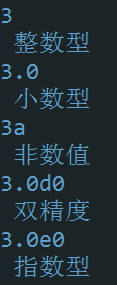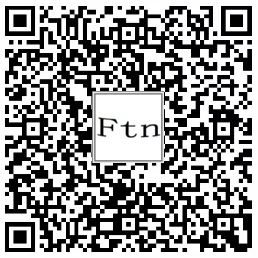以下为运行后的示范:

Program www_fcode_cn
Implicit None
Character(len=6) :: TYPE(0:4) = ["非数值","整数型","小数型","指数型","双精度"]
Integer :: IsNum , i
Character(len=32) :: c
Do
read(*,*) c
if(c=="exit") exit
i = IsNum( c )
write(*,*) TYPE(i)
End Do
End Program www_fcode_cn
Integer Function IsNum(zval)
! Verify that a character string represents a numerical value
! 确定字符是否是数值类型:
! 0-非数值的字符串
! 1-整数(integer)
! 2-小数(fixed point real)
! 3-指数类型实数(exponent type real)
! 4-双精度实数指数形式(exponent type double)
Implicit None
Character (Len=*), Intent (In) :: zval
Integer :: num, nmts, nexp, kmts, ifexp, ichr
Integer, Parameter :: kint = 1 ! integer
Integer, Parameter :: kfix = 2 ! fixed point real
Integer, Parameter :: kexp = 3 ! exponent type real
Integer, Parameter :: kdbl = 4 ! exponent type double
! initialise
num = 0 ! 数字的格式,最后传递给ISNUM返回
nmts = 0 ! 整数或浮点数的数字个数
nexp = 0 ! 指数形式的数字个数
kmts = 0 ! 有+-号为1,否则为0
ifexp = 0! 似乎没用
! loop over characters
ichr = 0
Do
If (ichr>=len(zval)) Then
! last check
If (nmts==0) Exit
If (num>=kexp .And. nexp==0) Exit
isnum = num
Return
End If
ichr = ichr + 1
Select Case (zval(ichr:ichr))
! process blanks
Case (' ')
Continue
! process digits
Case ('0', '1', '2', '3', '4', '5', '6', '7', '8', '9')
If (num==0) num = kint
If (num<kexp) Then
nmts = nmts + 1
! 整数或浮点数+1
Else
nexp = nexp + 1
! 指数形式+1
End If
! process signs
Case ('+', '-')
If (num==0) Then
If (kmts>0) Exit
! 出现2个符号,非数字
kmts = 1
num = kint
Else
If (num<kexp) Exit
If (ifexp>0) Exit
ifexp = 1
End If
! process decimal point
Case ('.')
If (num/=kint .And. ichr/=1) Exit
! 前面不是整数,小数点也不是第一个字符,则非数字
num = kfix
! process exponent
Case ('e', 'E')
If (num>=kexp) Exit
If (nmts==0) Exit
num = kexp
Case ('d', 'D')
If (num>=kexp) Exit
If (nmts==0) Exit
num = kdbl
! any other character means the string is non-numeric
Case Default
Exit
End Select
End Do
! if this point is reached, the string is non-numeric
isnum = 0
Return
End Function IsNum





